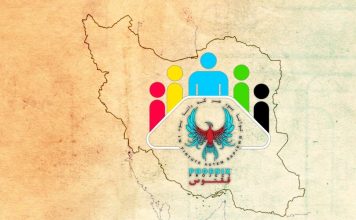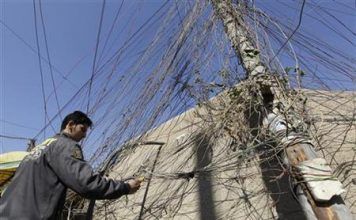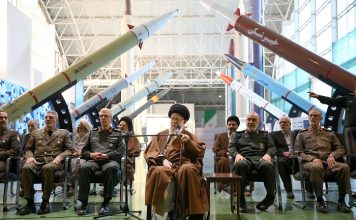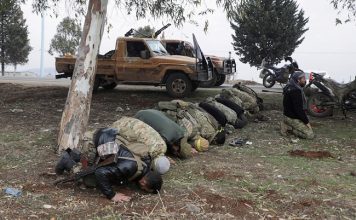It has been 88 years since a law was passed in Iran authorizing the removal of the hijab (known as the kashf-e hijab). Nearly nine decades later, Iranian women are mounting a protest by taking off their hijabs in the streets, and engaging in an uneven battle with the government, which has all the power to suppress them. They are fighting for the right to choose how they dress, and are resolved to use every possible method to dismantle the unjust regime of the Islamic Republic.
It was on Jan. 8, 1936 that the official order to remove the hijab entered into force, marking one of the most significant events in Iran’s contemporary history.
[aesop_image img=”https://kayhanlife.com/wp-content/uploads/2024/01/cover-no-44_17day.jpg” panorama=”off” credit=”Illustration by KL./” align=”center” lightbox=”on” captionsrc=”custom” captionposition=”left” revealfx=”off” overlay_revealfx=”off”]
The legislators at that time correctly realized that social development was impossible without the presence and participation of women, who constitute half of the country’s dynamic population. Additionally, the legislators understood that social development was an important precursor to economic and political progress.
At the time, the barriers of Islamic jurisprudence and tradition, coupled with the gender absolutism which manifested itself in religious zeal and prejudice, marginalized women and impeded their social position and status as citizens. Even in the most basic of social institutions, the family, they were confined to the duties of being a wife and a mother.
Efforts to promote education and culture and to empower women within their families — while challenging traditional and religious beliefs deeply entrenched in society — represented a laborious, challenging, and potentially thankless endeavor. Overcoming the societal pressures constraining women required a bold move that directly confronted outdated beliefs and norms, offering sweeping and rapid results.
Reza Shah was the sole individual of his time with the requisite bravery and determination to initiate such changes.
Admittedly, the groundwork for dismantling long-standing barriers to women’s rights had been laid in Iranian society years earlier. The women’s movement had initiated its cultural and political engagement during the period leading up to the constitutional revolution.
At the time, constitutional groups and associations played a crucial role in organizing the constitutional revolution. Despite facing restrictions, women established women-only or mixed groups to discuss and organize the intellectual foundations and implementation strategies of this national revolution. They included organizations such as the “Women’s Freedom Association“, “National Women’s Association”, and “Women’s Occult Union” in Tehran, as well as the “Women’s Committee” in Tabriz.
Before the constitutional revolution, progressive women discussed the freedom to take on social and political roles and the concept of “women’s rights.” Despite the establishment of numerous girls’ schools, women-led publications, and women’s empowerment associations, cultural barriers and male dominance in family decision-making hindered the widespread adoption of these advancements.
In such a situation, a law unveiling the hijab imposed on bigoted, ignorant men became the prelude to the widespread presence of Iranian women in various social and political arenas.
To discredit the Pahlavi government and justify the 1979 revolution, some political groups have systematically ignored the achievements of the two late Pahlavi kings. They have censored the achievements in the field of women’s progress, and presented a dictatorial and misogynist image of Reza Shah, implying that the removal of the hijab was imposed on the people as a “law from above.”
Yet removing the Islamic-Qajar hijab with the chador and veil was proposed long before 1936, and figures like Sedighe Dolatabadi appeared in public with an optional hijab. In other words, this demand existed within women’s society for decades. The women of that time understood that the first step to achieving equal opportunities with men was to freely participate in society.
The removal of the hijab did not happen “overnight” and in an isolated female arena. The legal preparations for it had been progressively made for several years. Among other things, marriage law was approved in 1932, and for the first time in the history of Iran, marriage came within the framework of rights granted to women. According to this law, punishments were prescribed for “harassment of women by the husband,” and for early marriage of girls, known as “child marriage”. Decades later, the Islamic Republic would cancel this legislation.
The removal of the Hijab in fact paved the way for women’s progress in the social arena. They immediately raised their social and political profile by establishing the “Iranian Women’s Party.” This led to their participation in parliament, ministries, embassies, as heads of organizations and departments, and even as judges in courts. They quickly entered the fields of sports and arts and played an active role as citizens in the development of a progressive Iran.
Yet some, such as the reformists, believe that a top-down law removing the hijab in the 20th century was wrong.
Many laws are passed and implemented to influence a nation’s culture. If the lawmaker’s assessment is accurate, the outcomes are positive, as seen with laws safeguarding the family, women, and the environment, as well as traffic regulations and the law on removing the hijab. However, if the lawmaker’s assessment is flawed, the law may fail to influence a nation’s culture, as was the case with the “mandatory hijab” law imposed by the government of the Islamic Republic in an attempt to transform Iranian women into revolutionary Muslim women and to symbolize the Islamic Revolution. This law was not embraced by society, and it failed to alter the culture of the general population!
The supporters of the Islamist left distort the fact that the Iranian women’s movement dates back to before the 1979 revolution, and even before the constitutional revolution. They deny its unique achievements before the Islamic revolution.
In reality, after the Islamic revolution, the status of Iranian women regressed for several decades, and their legal status deteriorated drastically. Additionally, the Iranian women’s movement emerged from the national consciousness during the development of the constitutional revolution, with Iranism being a part of women’s activities at that time. One of the most telling signs of this was the speech by Parvin Etesami, the prominent poet, at the high school graduation ceremony in 1924, which became known as the “Declaration of Women and History”.
For five decades in the last century, Iranian women took significant steps forward along with important reforms and laws to institutionalize and protect their equality and citizenship rights. Now, after four decades of rights violations by the Islamic Republic, they have turned to the act of removing the hijab since last year. Using important tools, they are fighting against the government.
This struggle began in the first days following the protests of the national movement, which erupted after the death of Mahsa Amini at the hands of “Ershad” police officers. Young Iranian women and girls took off their headscarves and set them on fire during street clashes, receiving support and sympathy from protesting men. Following the end of street protests, this political struggle has continued as civil resistance. Millions of women have been seen in the streets and public places, openly defying the Islamic Republic’s mandatory hijab rule by not wearing headscarves.
On the other hand, the leader of the Islamic Republic has clearly stated that “removing the hijab is forbidden in Sharia and politics.” In this way, government forces are free to oppress women. Hossein Shariatmadari, the representative of the leader of the Islamic Republic and the editor-in-chief of the Kayhan newspaper published in Tehran, also demanded that the Muslim people of Iran take action against the discovery of the hijab!
Although the government is trying to force women to obey the hijab imposed by the Islamic Republic in various ways such as legal, judicial, and police force to preserve the showcase of the Islamic society, no clear conclusion has been reached on how to forcefully deal with the removal of the hijab and eliminate this phenomenon. The regime promotes the “fight against unveiling hijab” with extensive advertisements.
One of the most important reasons for using non-violent pressure to fight voluntary hijab is the fear of a flood of nationwide protests in the streets again — a flood that may destroy the corrupt and worn-out body of the government this time.













